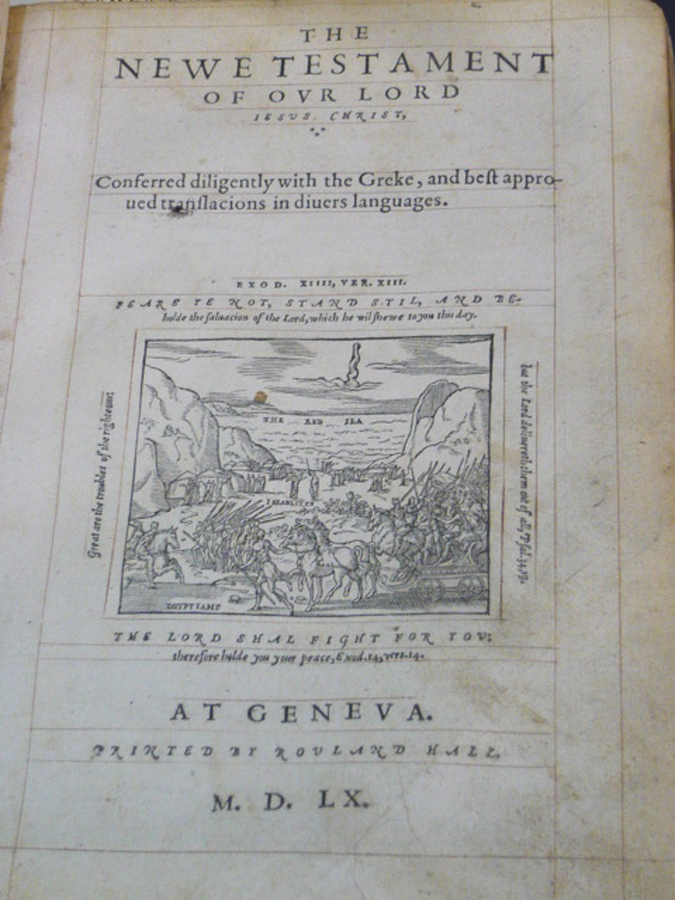

“Remember now thy creator in the days of thy youth,” “Vanity of vanities sayeth the Preacher”-such phrases as these are the great heritage of the Geneva Bible. The Geneva translators combined impeccable scholar¬ship with remarkable felicity of style. The first edition was extremely handsome and made many influential innovations in the format of English Bibles: it was the first Bible to use roman rather than black-letter type, the first to use verse divisions, and the first to use italic type for words not found in the original sources it included helpful tables, maps, and woodcuts and was composed in quarto, which made it more convenient to handle and carry than the earlier cumbersome folio versions. One of its members, John Bodley, the father of the founder of Oxford’s Bodleian Library, obtained from Queen Elizabeth exclusive rights to the publication of the Geneva Bible in England for seven years.

The cost of publishing the 1560 edition was borne by the English congregation at Geneva. Whittingham and his fellow translators made use of many other versions and commentaries, including the excellent work of Beza, and, more important, they returned to the Greek and Hebrew texts to guide and check their translations-the first of the English translators to employ such exacting and scrupulous methods. John Knox was there preaching to the English congregation, Calvin was there writing commentaries, and Theodore Beza, one of the most prominent Biblical scholars of the day, was there studying the Greek text. It was translated “for the space of two years and more, day and night” by William Whittingham, Anthony Gilbey, and others whom the accession of Mary Tudor had forced into exile at Geneva, then at the height of its ascendancy over the Protestant world. But the Geneva Bible was the product of the best Protestant scholarship of its time. Published at Geneva in 1560 by Rowland Hall, the Geneva Bible shaped the theology, the literary expression, and the very consciousness of the Elizabethan world.Įarlier English versions of the Bible-the Coverdale and Matthew Bibles, even the Great Bible (published in 1540 and authorized by Henry VIII for use in the churches) - were patchwork translations of inferior quality. Few translations of the English Bible have been as widely read and as influential as the Geneva Bible-which the University of Wisconsin Press here offers in a first-edition facsimile.


 0 kommentar(er)
0 kommentar(er)
